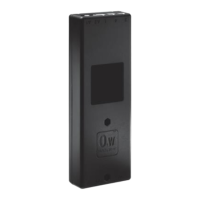Disposal of LINAK’s products
As LINAK’s customers often ask us how our products can be disposed of or scrapped we have prepared this
guidance that enables a classification to different waste fractions for recycling or combustion.
Guidance
We recommend that our products be disassembled as much as possible and divided into different waste
groups for recycling or combustion.
For example, waste can be sorted into metals, plastics, cable scrap, combustible material, and recoverable
resources.
Some of these main groups can be further divided into subgroups; e.g. metal can be divided into steel/
aluminium/copper and plastic can be divided into ABS/PA/PE/PP.
As an example, the table below breaks down the different components in LINAK products to various recycling
groups:
Spindle and motor
Plastic housing
Cable
PCB boards
Scrap
Plastic recycling or combustion
Cable scrap or combustion
Electronics scrap
PCB boards
Plastic housing
Cable
Transformer
Electronics scrap
Plastic recycling or combustion
Cable scrap or combustion
Metal scrap
Plastic housing
Cable
PCB board
Plastic recycling or combustion
Cable scrap or combustion
Electronics scrap
By now almost all our casted plastic parts are supplied with an interior code for plastic type and fibre
contents, if any.
Main groups of disposal
Plastic recycling
or combustin
Disposal of batteries
Details regarding safe disposal of used and leaking batteries:
Batteries should be disposed in accordance with appropriate federal, state and local regulations. LINAK
recommends that used or leaking batteries are disposed through local recycling system. Please do not throw
used or leaking batteries in normal household waste or in nature. This will cause damage to the enviroment.
How to deal with leaking batteries.
Leaking batteries should be disposed as described above.
If leaking batteries are discovered in the product the batteries must be removed at once to minimise damage
to the product. If leaking batteries are left in the product it might become defect.
It is recommended to use plastic gloves when handeling leaking batteries. The contents of a leaking batteries
can cause chemical burns and respiratory irritation.
If exposed to the contents of a leaking battery, please wash with soap and water. If irritation persists, please
seek medical attention. In case of eye contact, please flush eyes thoroughly with water for 15 minutes and
seek medical attention."

